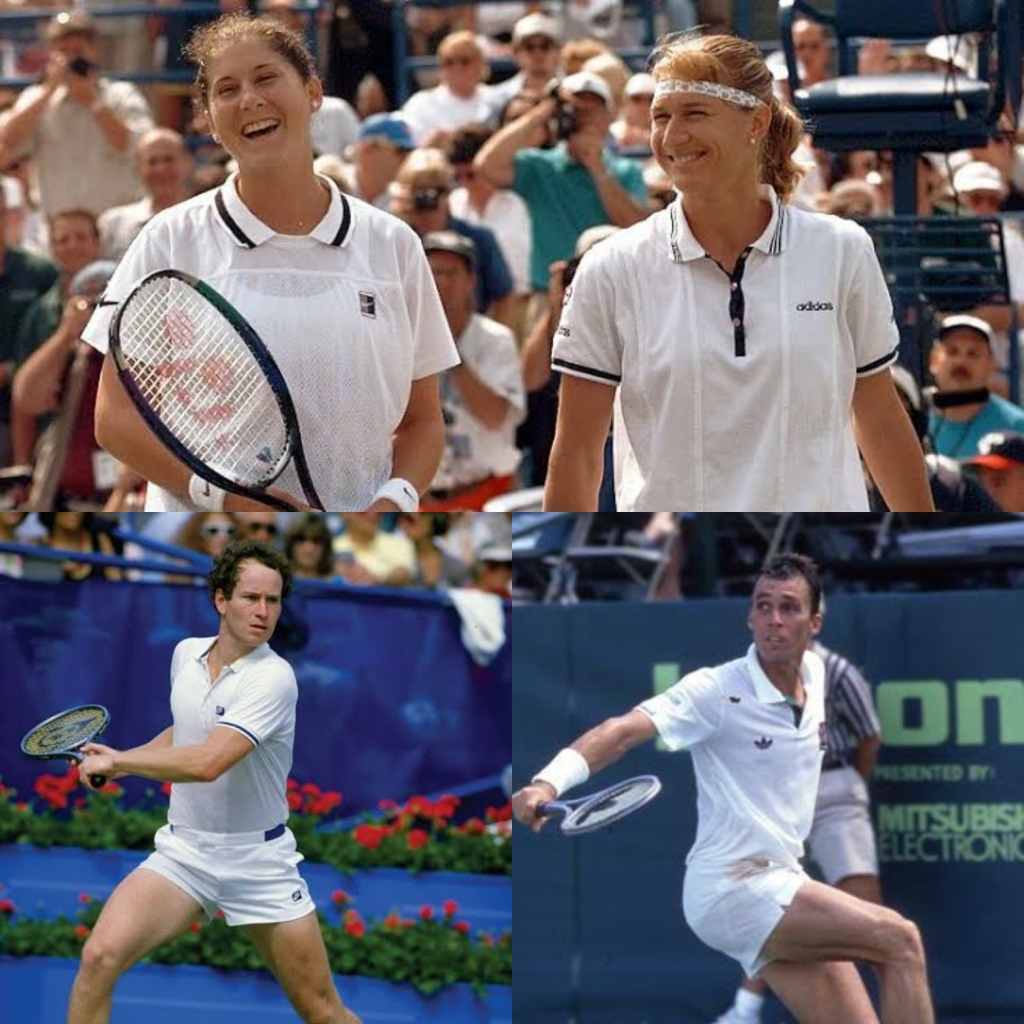I watched highlights of some old, classic Roland Garros matches, in preparation for this year’s event, which starts this weekend.
The first match I watched was the McEnroe-Lendl final from 1984. I’ve read a lot about this match, but this was the first time I was watching. McEnroe played serve-and-volley tennis and outplayed Lendl in the first two sets! Imagine! Serve-and-volley tennis being played at Roland Garros! Won’t happen today 😊 Then Lendl came back and won the next three sets, inspite of being a break down repeatedly and won his first grand slam. Lendl was probably the Rafael Nadal of his time and McEnroe was probably the Roger Federer. But this is not a perfect comparison, because Lendl’s game was beautiful to watch, and his backhand was almost like Federer’s – such a pleasure to watch. McEnroe’s serve-and-volley game and his net play were brilliant. I’ve heard old-timers say that McEnroe was outrageously talented and he showed what he could do with a serve-and-volley game on a clay court. Though I have to also say that I’ve watched recordings of Martina Navratilova’s matches, and her serving-and-volleying and netplay were even more brilliant than McEnroe’s. I was expecting the match to be tame and unimpressive, because it happened a long time back, and old matches look that way today, because we are used to the speed and the athleticism of today’s players. I once watched the highlights of a Borg-Lendl French Open final and it looked pretty lame. After that I decided not to watch old matches but just read about them. But surprisingly this McEnroe-Lendl match looked quite good, even today.

The next match I watched was the Graf-Seles final from 1992. It was very competitive and it went quite close in the third set. I didn’t know that Seles had a double-handed forehand! I’ve never seen a player with a double-handed forehand! She was the first player from the former Yugoslavia to win so many grand slams, and I’m wondering how much of an inspiration she must have been to Novak Djokovic and other contemporary players from the region. Seles had Graf’s number at that time, and if that tragic event hadn’t happened, she would have beaten Margaret Court’s record. Seles won 8 grand slams while she was a teenager! It must be a record even now, I think.
Looking forward to watching the Serena-Henin 2003 match highlights today evening. I still don’t know how Henin beat Serena with her single-handed backhand! None of the women play with a single-handed backhand now. Except for two exceptions. There is a British doubles player, whose name I can’t remember, who plays with a single-handed backhand. Then there is one of my favourite players, Viktorija Golubic, who plays with a single-handed backhand. Everytime Golubic plays in a grand slam, I watch the whole match. It doesn’t matter whether she wins or loses. When she unfurls her single-handed backhand, it is so beautiful that my heart leaps with delight. It is more beautiful than Federer’s single-handed backhand, more beautiful than even Richard Gasquet’s single-handed backhand, and definitely much more beautiful than Tsitsipas’ or Wawrinka’s single-handed backhand. I hope Golubic plays for many more years and delights her fans.
Tennis is not just about winning and losing – it is about beauty, it is about aesthetic pleasure, it is kinetic art. That is why we watch Federer, that is why we watch Barbora Krejcikova, that is why we watch Richard Gasquet, that is why we watch Viktorija Golubic, that is why we watch Dustin Brown, that is why we watch Hsieh Su-wei, and that is why we rave about Agnieszka Radwanska, John McEnroe, Martina Navratilova, Pete Sampras, Stefan Edberg, Miloslav Mecir, Pat Rafter, eventhough they have long since retired.
Can’t wait for the French Open to start now 😊 Are you looking forward to the French Open?



